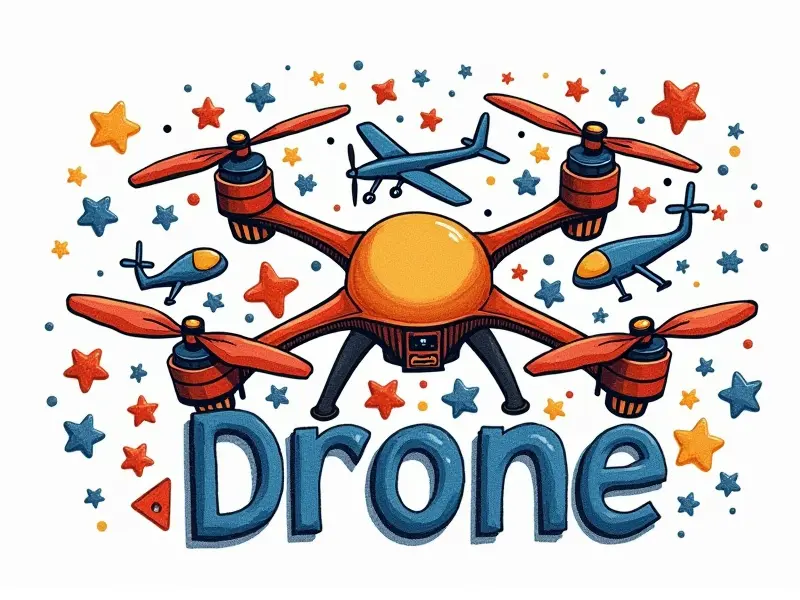Is drone autopilot safe?

Is Drone Autopilot Really Safe?
The rise of drone technology has brought with it a plethora of innovative features, one of which is the autopilot system. This feature promises to simplify and enhance the flying experience by automating many tasks traditionally handled manually. However, as with any new technology, concerns about safety are paramount. Is it truly safe to entrust your drone's flight operations to an automated system?
Risks vs. Benefits of Drone Autopilot
Autonomous drones offer several advantages over manual operation:
- Simplified Flying: Autopilot systems can handle complex maneuvers, making it easier for novice pilots to fly.
- Increased Efficiency: Drones can perform repetitive tasks more accurately and faster than human operators.
- Enhanced Safety: Advanced sensors and algorithms help avoid collisions and maintain stability in challenging conditions.
However, there are also potential risks associated with drone autopilot systems:
- Technical Failures: Software glitches or hardware malfunctions can lead to unexpected behavior.
- Cybersecurity Threats: Connected drones may be vulnerable to hacking and unauthorized control.
- Limited Situational Awareness: Automated systems might not always respond appropriately to unforeseen circumstances.
How Safe is Autonomous Drone Flight?
The safety of autonomous drone flight depends on several factors, including the quality of the autopilot system and how it's used. Modern drones incorporate advanced features like GPS navigation, obstacle avoidance sensors, and real-time data processing to enhance reliability.
Manufacturers invest heavily in testing and validation processes to ensure that their drones meet stringent safety standards before release. However, users must also take responsibility by adhering to best practices and staying informed about the capabilities and limitations of their drone's autopilot system.
Understanding Drone Autopilot Safety Concerns
One major concern is the potential for software errors or hardware failures that could compromise flight stability. While manufacturers strive to minimize these risks through rigorous testing, they cannot eliminate them entirely.
Cybersecurity threats pose another significant risk. As drones become more connected and reliant on cloud services, there's a growing danger of unauthorized access to drone systems.
Evaluating the Security of Drone Autopilot Systems
To assess the security of an autopilot system, consider:
- Encryption: Ensure that data transmitted between the drone and control station is encrypted to prevent interception by malicious actors.
- Authentication Mechanisms: Verify that only authorized users can access and control the drone's autopilot functions.
- Regular Updates: Stay current with firmware updates that address known vulnerabilities and improve system performance.
The Truth About Drone Autopilot Safety
The truth is, while there are inherent risks associated with drone autopilot systems, these risks can be managed through careful selection of equipment, adherence to best practices, and ongoing vigilance regarding cybersecurity threats.
Manufacturers continue to innovate and improve the safety features of their drones, making them increasingly reliable for a wide range of applications.
Is Using Drone Autopilot Worth the Risk?
The decision to use drone autopilot depends on your specific needs and risk tolerance. For commercial operations requiring high precision and efficiency, the benefits often outweigh the risks.
For recreational users, the convenience and ease of use offered by autopilot systems can enhance enjoyment without posing significant danger if used responsibly.
Are Drone Autopilots Really Safe?
The answer to whether drone autopilots are safe is nuanced. While they offer substantial benefits in terms of performance and safety, users must remain vigilant about potential risks and take appropriate precautions.
By staying informed about the latest developments in drone technology and following best practices for operation and maintenance, you can maximize the advantages while minimizing the drawbacks.
How Safe Are Autonomous Drones Today?
The safety of autonomous drones today is generally high due to ongoing advancements in technology and rigorous testing protocols. However, continuous improvement is necessary to address emerging challenges such as cybersecurity threats and environmental unpredictability.
Manufacturers are actively working on enhancing the robustness and reliability of autopilot systems, ensuring that they remain a safe and valuable tool for both professional and recreational use.
Can You Trust Drone Autopilot Features?
Trust in drone autopilot features is warranted when you choose reputable products from established manufacturers and follow recommended guidelines for operation. By staying informed about the latest developments and best practices, users can confidently leverage these advanced capabilities to enhance their flying experience.
Evaluating the Safety of Drone Automation
When evaluating the safety of drone automation, consider:
- User Experience: How intuitive is the autopilot system? Does it provide clear feedback and control options?
- Technical Specifications: What sensors, processors, and algorithms does the system employ to ensure safe operation?
- Manufacturer Reputation: Is the manufacturer known for producing reliable and secure products?
Conclusion
The safety of drone autopilot systems is a complex issue that requires careful consideration of both risks and benefits. While there are valid concerns about technical failures, cybersecurity threats, and limited situational awareness, these can be mitigated through informed decision-making and adherence to best practices.
By choosing reputable products and staying vigilant regarding potential vulnerabilities, users can enjoy the numerous advantages offered by drone autopilot technology while minimizing risks.

